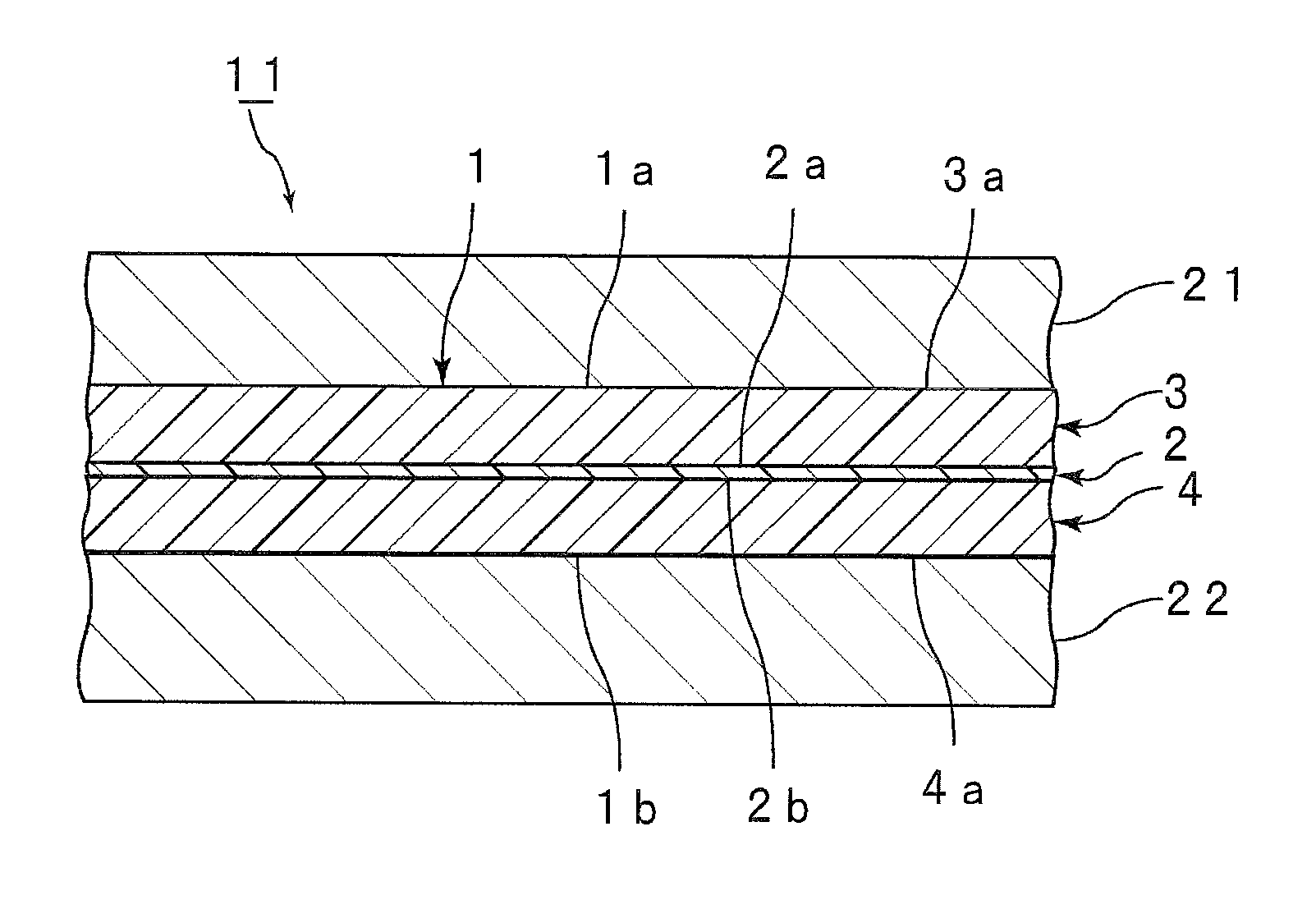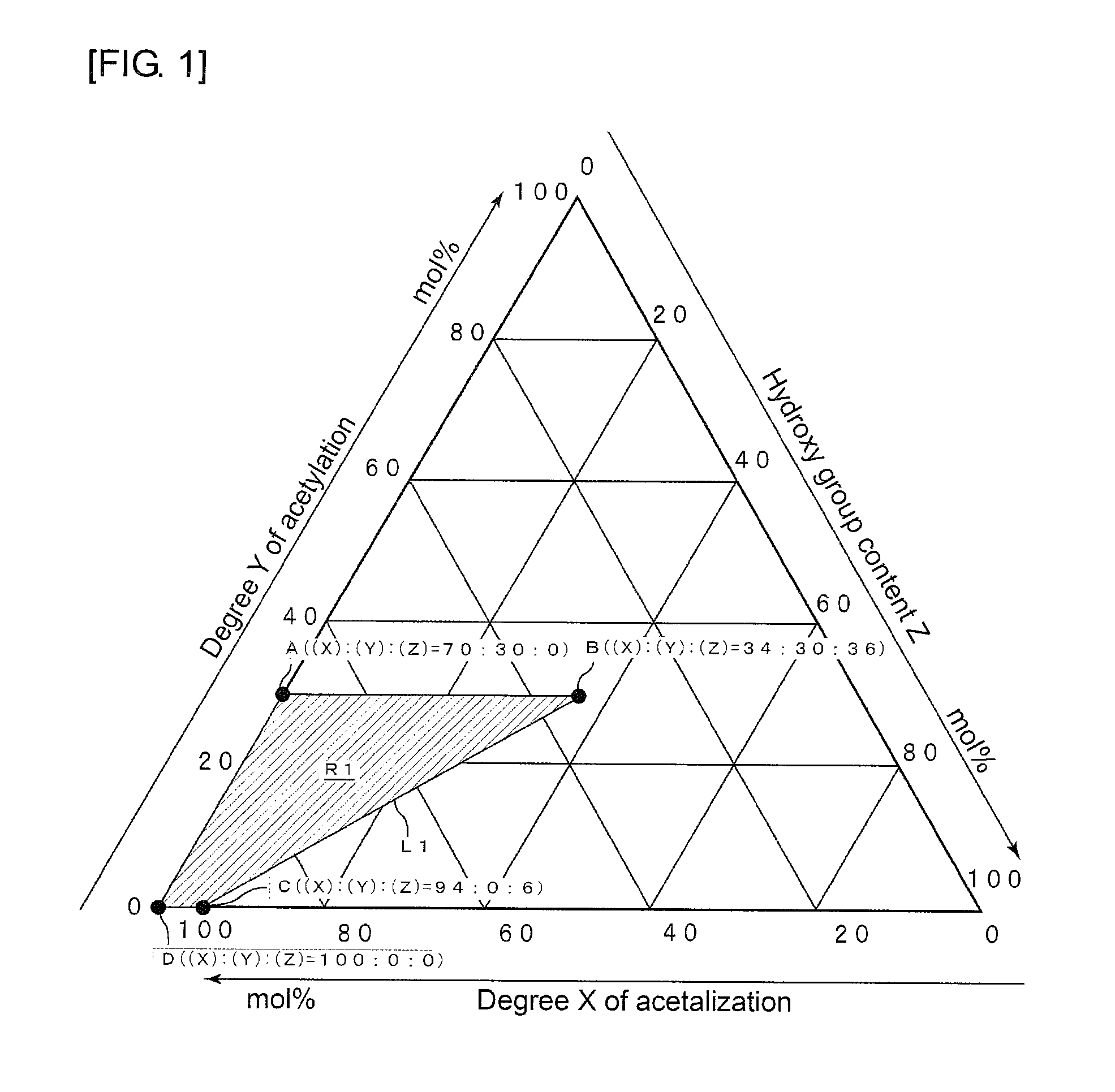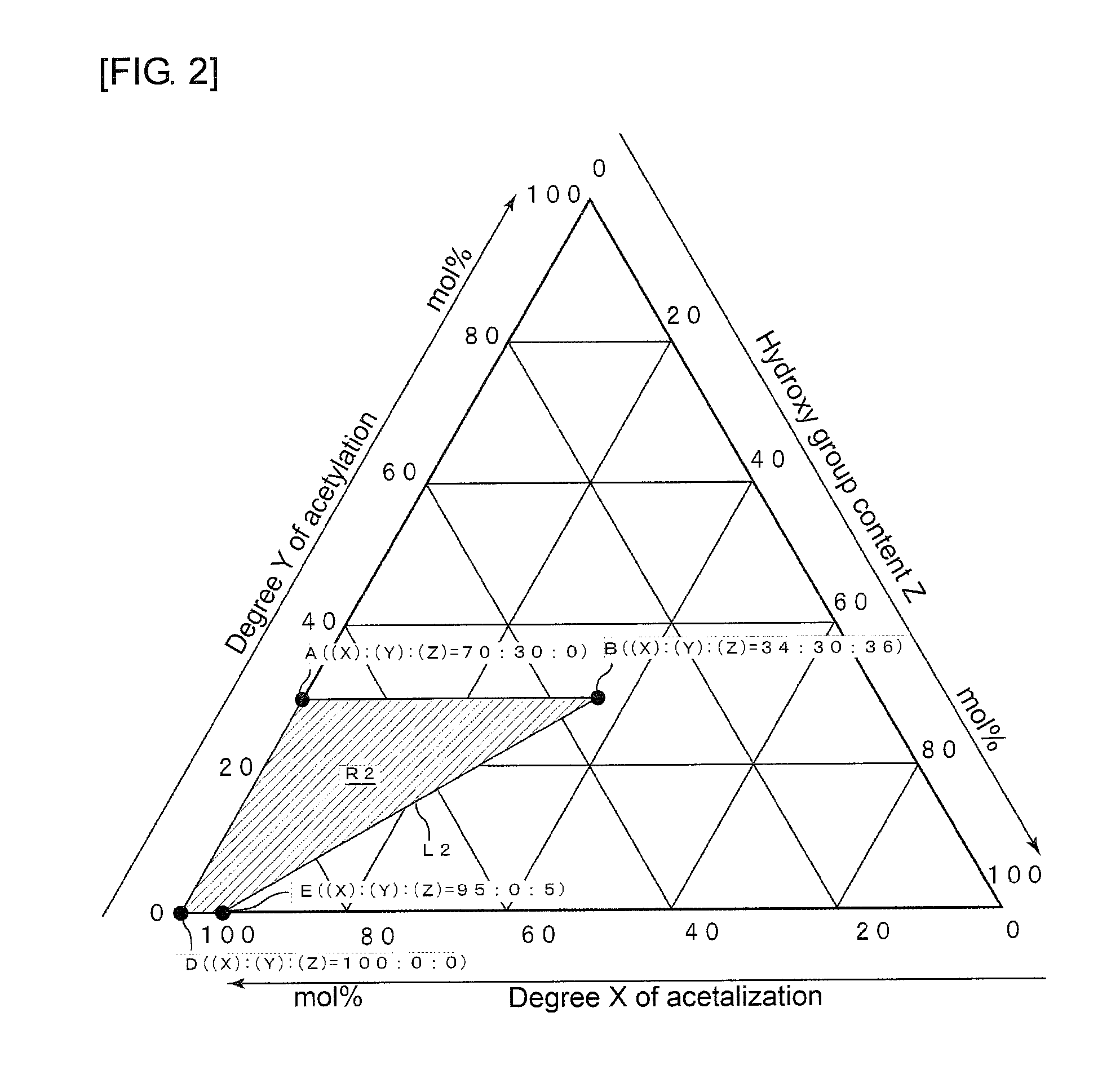Laminated glass intermediate film and laminated glass
a technology of laminated glass and intermediate film, which is applied in the direction of chemistry apparatus and processes, synthetic resin layered products, transportation and packaging, etc., can solve the disadvantage of insufficient sound insulation property against sounds at a register of about 5,000 hz, and achieve the effect of enhancing the sound insulation property in a high frequency rang
- Summary
- Abstract
- Description
- Claims
- Application Information
AI Technical Summary
Benefits of technology
Problems solved by technology
Method used
Image
Examples
synthesis example 1
Synthesis of Polyvinyl Acetal Resin Used in an Intermediate Layer A of Example 1
[0210]
[0211]To pure water (2890 g), a polyvinyl alcohol resin (191 g, degree of polymerization: 2500, degree of saponification: 79 mol %) was added and heated to be dissolved. The resulting solution was adjusted to a temperature of 12° C. A 35% by weight hydrochloric acid (201 g) and n-butyl aldehyde (150 g) were added thereto for deposition of a polyvinyl butyral resin. Then, the mixture was held at a temperature of 50° C. for three hours for completion of the reaction. Unreacted n-butyl aldehyde was washed away with excessive water, and the hydrochloric acid catalyst was neutralized. The resulting product was dried after removal of salts, thereby giving a polyvinyl butyral resin. A degree of acetylation of the obtained polyvinyl butyral resin was 21 mol %, a degree of butyralization thereof was 54 mol %, and a hydroxy group content thereof was 25 mol %.
synthesis example 2
Synthesis of Polyvinyl Acetal Resin Used in an Intermediate Layer A of Example 2
[0212]
[0213]A polyvinyl butyral resin (average degree of polymerization of 1700) having a degree of acetylation of 0.5 mol %, a degree of butyralization of 64 mol %, and a hydroxy group content of 35.5 mol % was dissolved in pyridine. To the dissolved polyvinyl butyral resin, 17.5 molar equivalents of acetic anhydride was added, and the mixture was stirred for 300 minutes at a temperature of 80° C. After removal of pyridine, the polyvinyl butyral resin was washed with water and dried, so that a polyvinyl butyral resin (average degree of polymerization of 1700) was obtained. A degree of acetylation of the obtained polyvinyl butyral resin was 18 mol %, a degree of butyralization thereof was 64 mol %, and a hydroxy group content thereof was 18 mol %.
synthesis example 3
Synthesis of Polyvinyl Acetal Resin Used in an Intermediate Layer A of Example 3
[0214]
[0215]A polyvinyl butyral resin (average degree of polymerization of 1700) having a degree of acetylation of 0.5 mol %, a degree of butyralization of 64 mol %, and a hydroxy group content of 35.5 mol % was dissolved in pyridine. To the dissolved polyvinyl butyral resin, 22.5 molar equivalents of acetic anhydride was added, and the mixture was stirred for 300 minutes at a temperature of 80° C. After removal of pyridine, the polyvinyl butyral resin was washed with water and dried, so that a polyvinyl butyral resin (average degree of polymerization of 1700) was obtained. A degree of acetylation of the obtained polyvinyl butyral resin was 23 mol %, a degree of butyralization thereof was 64 mol %, and a hydroxy group content thereof was 13 mol %.
PUM
| Property | Measurement | Unit |
|---|---|---|
| aaaaa | aaaaa |
Abstract
Description
Claims
Application Information
 Login to View More
Login to View More - R&D
- Intellectual Property
- Life Sciences
- Materials
- Tech Scout
- Unparalleled Data Quality
- Higher Quality Content
- 60% Fewer Hallucinations
Browse by: Latest US Patents, China's latest patents, Technical Efficacy Thesaurus, Application Domain, Technology Topic, Popular Technical Reports.
© 2025 PatSnap. All rights reserved.Legal|Privacy policy|Modern Slavery Act Transparency Statement|Sitemap|About US| Contact US: help@patsnap.com



